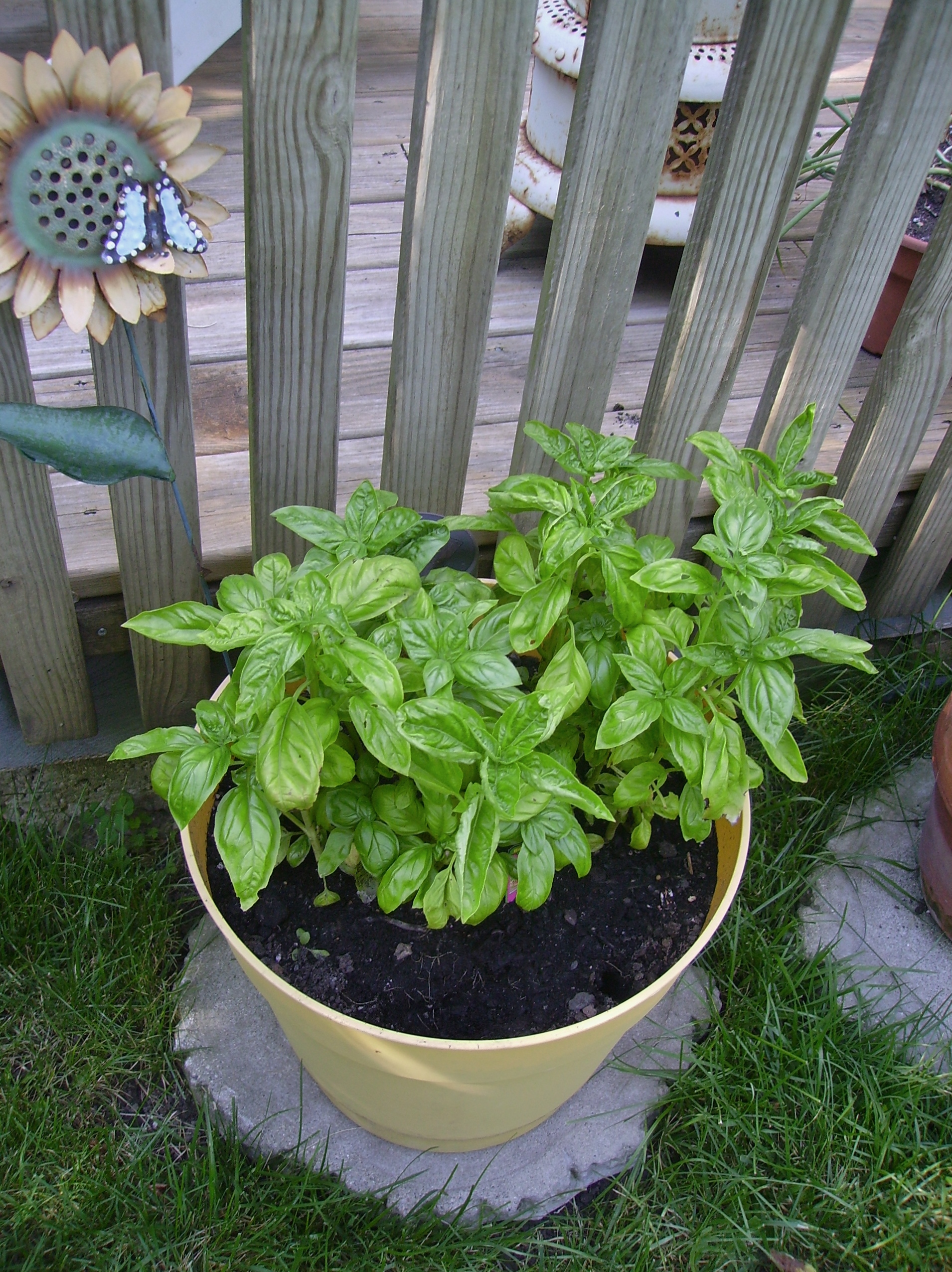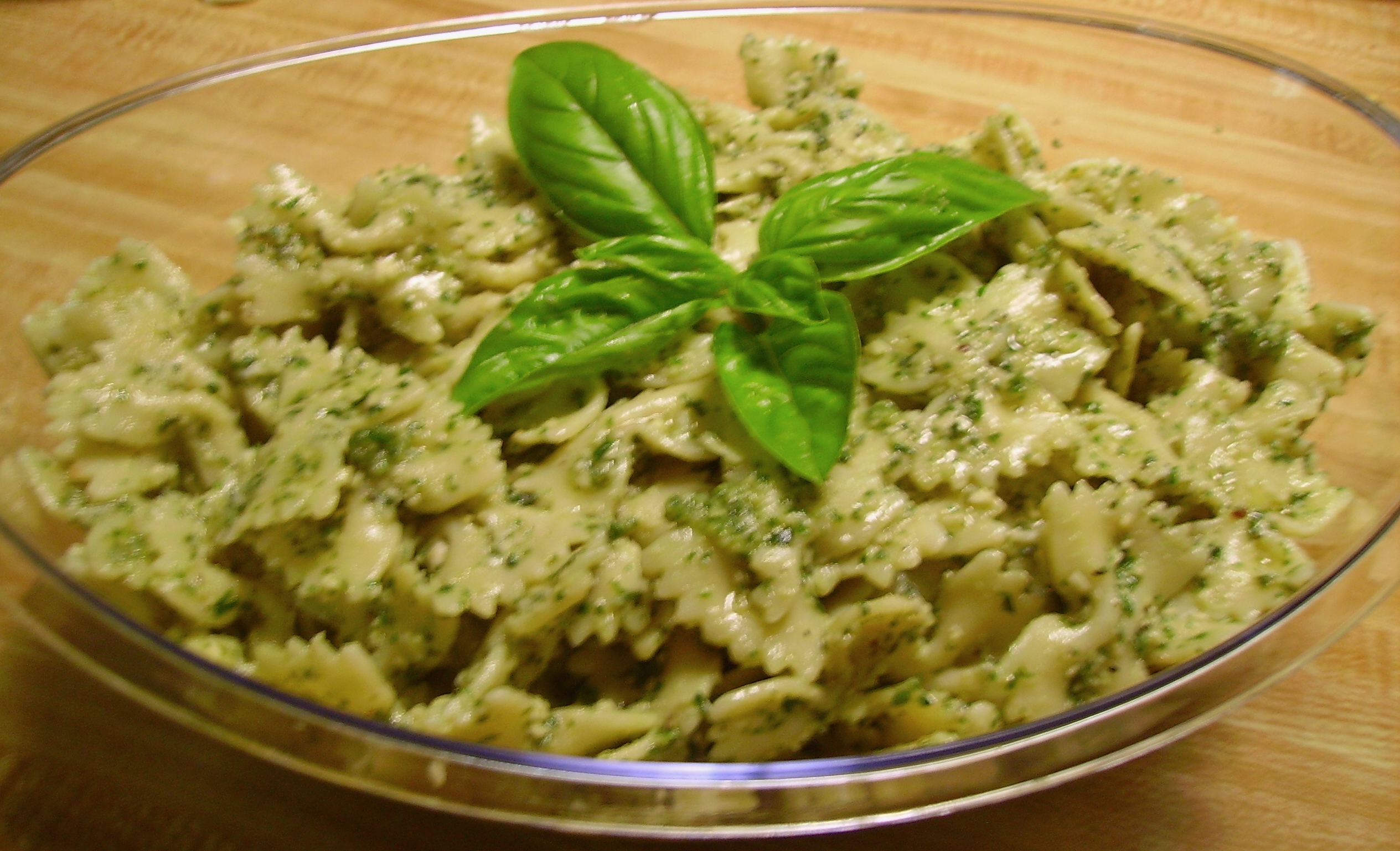 I’ve talked about basil at length before, but I love this herb enough to do it one more time. As the summer moves on, the basil gets bigger and more fragrant. The flowers haven’t quite started yet, but the leaves are getting more fragrant and just stepping in the yard reveals a hint of the smell (if your mind is feeling right). We are still using it in a variety of recipes, but the time for Pesto making is drawing near.
I’ve talked about basil at length before, but I love this herb enough to do it one more time. As the summer moves on, the basil gets bigger and more fragrant. The flowers haven’t quite started yet, but the leaves are getting more fragrant and just stepping in the yard reveals a hint of the smell (if your mind is feeling right). We are still using it in a variety of recipes, but the time for Pesto making is drawing near.
I will be the first to admit that Pesto is an acquired taste. For me, I love the smell, texture, and taste of pesto. My digestive system, however, has issues….it gives me heartburn. I was faced with the quandary of how to enjoy Pesto, but not have to pay the price afterwards. I experimented with a few ideas and finally came up with what, for me, is the perfect solution: Roasted Garlic Pesto.
My interpretation of the classic Genovese recipe uses the usual gallery of ingredients, I just treat them a little differently.
First there’s the garlic. Most recipes call for several cloves of raw garlic which will send my digestive juices to a very ugly place. I opt to take a whole head (yes, a whole head) whack off the top, drizzle it with olive oil, wrap it in foil, and stick it in the oven (350 degrees)until it gives off a sweet garlic aroma which can take 30 – 40 minutes.
While that’s happening, I like to toast the pine nuts. This is usually about 3 ounces of raw nuts. I toast them on top of the stove until they are lightly golden and smell, well, like pine trees( yes, they are aptly named).
Basil and parsley in about a 4 to 1 ratio are combined in the processor with the garlic and pine nuts. They are processed until they are of a medium texture. I drizzle in the olive oil until a chunky paste forms.
No Pesto is complete without cheese. I use Pecorino Romano. This is a pungent sheep’s milk cheese, that has a slightly creamier texture than Parmesan. It is the cheese that I grew up with. We would buy it by the half wheel and grind it in our Mouli Grater. If you haven’t tried this cheese, I would encourage you to give it a shot. Another plus, it’s about half the price Parmagiano Reggiano.
If you haven’t tried this cheese, I would encourage you to give it a shot. Another plus, it’s about half the price Parmagiano Reggiano.
So, I use about 3/4 of a cup of the grated cheese. This is added to the paste in the processor. Everything is blended until the paste is slightly chunky (more olive oil can be added at this point if it seems like it’s dry) with a creamy look.
It is now ready to use in your favoite recipe or it can also be frozen in 1/4 to 1/3 cup portions for future uses that will keep for up to 6 months in freezer tolerant packaging.
Pasta and Pesto go together like Laurel and Hardy. It is wonderful on Fetuccinni or Liguine (mixed with a little heavy cream or even some red sauce). It can top fish or chicken, even a grilled steak would be happy to have it as its crowning glory.
One of my favorite ways to use it is in a Pesto Pasta Salad. I use Farfalle or Cavatapi pasta because it has lots of nooks and cranies to hold the Pesto. I toss the cooked pasta lightly with olive oil, then add the pesto a little at a time until the pasta is nicely coated. This can be served at room temperature or it can be chilled. The chilling lets the flavors get to know each other, but may require a little milk or olive oil to moisten it before serving.
I use Farfalle or Cavatapi pasta because it has lots of nooks and cranies to hold the Pesto. I toss the cooked pasta lightly with olive oil, then add the pesto a little at a time until the pasta is nicely coated. This can be served at room temperature or it can be chilled. The chilling lets the flavors get to know each other, but may require a little milk or olive oil to moisten it before serving.
So, Pesto – the recipe isn’t an exact one, but that allows for indivdual interpretation. I hope you will find your own perfect Pesto recipe. Let me know what it is.

